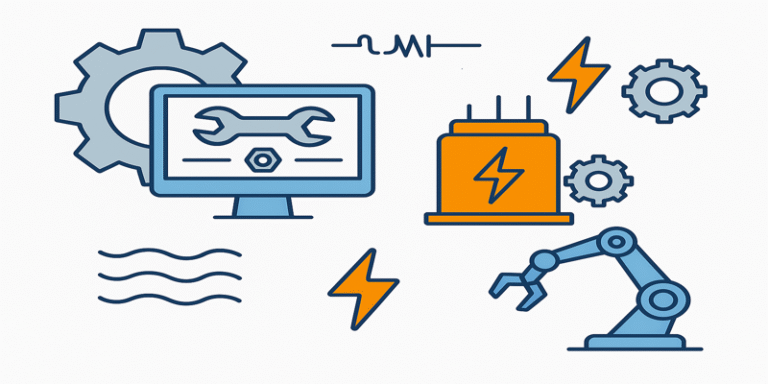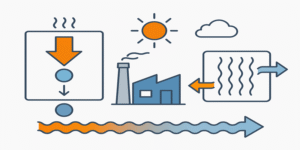Mechanical engineering stands as one of the oldest, broadest, and most versatile branches of engineering. Rooted in the application of mechanics, thermodynamics, fluid dynamics, and materials science, it focuses on the design, analysis, and manufacture of mechanical systems that power our modern world. From the automotive engines that propel our vehicles to the wind turbines that harvest renewable energy, mechanical engineering blends scientific principles with creative problem-solving to create practical, efficient, and sustainable solutions (Shigley et al., 2020).
Foundations of Mechanical Engineering
The core of mechanical engineering lies in understanding forces and motion—how they act on physical systems and how those systems respond. This requires a deep knowledge of both theoretical principles and practical design techniques.
Historically, mechanical engineering emerged during the Industrial Revolution, when the invention of the steam engine revolutionised manufacturing and transportation. Today, its scope extends far beyond engines and machinery, encompassing everything from micro-electromechanical systems (MEMS) to large-scale industrial plants.
Mechanical engineers use tools such as computer-aided design (CAD), simulation software, and 3D printing to model, test, and refine designs before they are built. This approach ensures both efficiency and durability, reducing waste and costs.
Core Study Areas
1.0 Dynamics and Control Systems
Dynamics studies the motion of bodies under the influence of forces, while control systems involve managing and regulating that motion to achieve desired performance. These concepts are essential for applications such as robotics, automated manufacturing, and vehicle stability systems.
Control engineering uses feedback mechanisms—such as sensors and actuators—to keep machines operating within safe and efficient parameters (Ogata, 2010). For instance, in autonomous vehicles, control systems ensure accurate steering, braking, and acceleration.
2.0 Heat Transfer and Thermodynamics
Thermodynamics explores how energy is transferred between systems and transformed into work, while heat transfer focuses on the mechanisms—conduction, convection, and radiation—through which heat moves.
These principles underpin the design of engines, refrigeration systems, power plants, and HVAC systems. Understanding energy efficiency is crucial in an era of climate change, where engineers must balance performance with sustainability (Cengel & Boles, 2015).
3.0 Computer-Aided Design (CAD)
CAD software allows engineers to create precise 2D and 3D models of mechanical systems, enabling rapid prototyping and simulation. With CAD tools, engineers can visualise stress distribution, thermal behaviour, and motion paths before physical testing.
Modern CAD systems often integrate with computer-aided manufacturing (CAM) and finite element analysis (FEA), making the design-to-production process seamless and highly efficient (Shih, 2018).
4.0 Manufacturing Processes
Mechanical engineers must understand how materials can be shaped, joined, and finished to produce functional products. Common manufacturing processes include:
- Machining
- Casting
- Welding
- Additive manufacturing (3D printing)
Advances in precision engineering have made it possible to manufacture components with tolerances measured in micrometres, which is essential in fields like aerospace and medical device production.
5.0 Mechatronics
Mechatronics is the integration of mechanical, electrical, and computer systems into a unified design. It is central to the creation of smart machines—devices capable of sensing, decision-making, and actuation.
Applications include industrial robots, automated guided vehicles, and consumer electronics. The rise of Industry 4.0 has made mechatronics a critical discipline, enabling real-time monitoring, predictive maintenance, and self-optimising systems (Bolton, 2015).
Applications of Mechanical Engineering
The breadth of mechanical engineering ensures its presence in nearly every industry.
1.0 Renewable Energy
Mechanical engineers design wind turbines, hydropower systems, and solar tracking devices to maximise renewable energy generation. Their expertise in fluid dynamics and structural mechanics ensures these systems are both efficient and durable under variable environmental conditions.
2.0 Medical Technology
In biomechanical engineering, mechanical principles are applied to develop prosthetic limbs, orthopaedic implants, and rehabilitation devices. Advances in materials science allow for lighter, more comfortable, and more functional designs, improving the quality of life for patients (Bronzino & Peterson, 2020).
3.0 HVAC Systems
Heating, ventilation, and air conditioning (HVAC) systems rely on mechanical engineering to optimise air flow, thermal comfort, and energy use in residential, commercial, and industrial buildings.
4.0 Automation in Manufacturing
From assembly line robots to automated inspection systems, mechanical engineers design and maintain machinery that increases production efficiency and reduces human error. Integration with AI and smart sensors has revolutionised the manufacturing process.
5.0 Transportation
Mechanical engineers design and improve automobiles, trains, ships, and aircraft. They optimise fuel efficiency, safety, and comfort, while working towards electrification and sustainable mobility solutions.
Mechanical Engineering and Industry 4.0
The term Industry 4.0 refers to the ongoing transformation of manufacturing through digital technologies, automation, and data exchange. For mechanical engineers, this means:
- Embedding smart sensors into machinery for continuous performance monitoring.
- Using AI for predictive maintenance, reducing downtime.
- Employing digital twins—virtual replicas of physical systems—to simulate performance and optimise operations (Kagermann et al., 2013).
These innovations allow for more agile, responsive, and efficient production systems.
Challenges and Future Directions
While mechanical engineering continues to drive innovation, it faces significant challenges:
- Sustainability: Designing systems that minimise environmental impact.
- Resource efficiency: Reducing waste and energy use.
- Globalisation: Adapting designs for diverse markets with varying regulations.
- Technological disruption: Keeping pace with rapid advancements in AI, materials science, and manufacturing technologies.
Emerging areas of research include:
- Soft robotics for delicate tasks in healthcare and agriculture.
- Micro and nano-scale engineering for electronics and biomedical devices.
- Advanced composites for lightweight yet strong materials in aerospace and automotive industries.
Mechanical engineering is a discipline of endless diversity and adaptability. It merges scientific knowledge with practical skills to design systems that improve the way we live, work, and interact with the world. From the smallest precision components to massive infrastructure projects, mechanical engineers are central to innovation.
As technology evolves—through AI integration, smart systems, and sustainable design—mechanical engineers will continue to shape the future. Whether it’s harnessing renewable energy, developing life-saving medical devices, or advancing space exploration, this discipline remains at the heart of engineering progress.
References
Bolton, W. (2015). Mechatronics: Electronic Control Systems in Mechanical and Electrical Engineering (6th ed.). Pearson.
Bronzino, J. D. & Peterson, D. R. (2020). The Biomedical Engineering Handbook (5th ed.). CRC Press.
Cengel, Y. A. & Boles, M. A. (2015). Thermodynamics: An Engineering Approach (8th ed.). McGraw-Hill Education.
Kagermann, H., Wahlster, W. & Helbig, J. (2013). Recommendations for Implementing the Strategic Initiative INDUSTRIE 4.0. German National Academy of Science and Engineering.
Ogata, K. (2010). Modern Control Engineering (5th ed.). Pearson.
Shigley, J. E., Uicker, J. J. & Pennock, G. R. (2020). Shigley’s Mechanical Engineering Design (11th ed.). McGraw-Hill Education.
Shih, R. Y. (2018). Introduction to Computer Aided Design and Drafting (3rd ed.). Cengage Learning.









